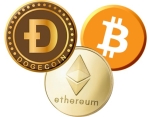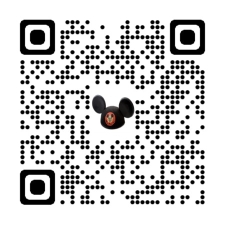Riverfront Square The Failed Disneyland Park Successor That Beer Helped Kill
ID:
TMS-5171
Source:
SFGate
Author:
Katie Dowd
Dateline:
Posted:
Status:
Current
Walt Disney was no teetotaller. At the end of his work day, his secretary would often pour him a Scotch Mist: scotch, plenty of ice and a kiss of lemon peel on top. But when it came to his theme park empire, Disney abhorred the thought of alcohol served to his guests. He despised places like Coney Island, full of debauchery, necking teens and plenty of booze. When Disneyland opened in 1955, it sold coffee and cigarettes — Main Street had a tobacco shop until 1990, believe it or not — but not a drop of alcohol.
As Disneyland grew into an international sensation, Disney began deciding on his next big project. He wasn’t yet sure he wanted to build a whole new theme park, but when St. Louis came knocking in 1963, his ears perked up.
What followed was a strange saga of urban planning, beer wars and a failed project that would change Disney parks forever.
St. Louis, Missouri was transforming in the early 1960s. In preparation for the city’s bicentennial, a project of unimaginable scale was underway. The entire riverfront was under construction as workers built the Gateway Arch and Busch Stadium from the ground up, while also transforming blocks of the city to create a lively downtown district.
The first mention of Riverfront Square was in late 1962. Initially, it was conceived of as a car-free shopping and dining plaza near the new ballpark. “Reviving the sparkle of the steamboat era, downtown square would feature sightseeing delights and facilities to ‘eat, drink and be merry’ in a wide economic range,” the St. Louis Globe-Democrat reported in October 1962.
In March 1963, St. Louis officials, seeking a little razzle dazzle for the project, flew to Burbank to meet with Walt Disney at his studio. The delegation, led by Mayor Raymond Tucker, had already tested the waters in a few phone calls with Disney. “He showed interest in the project but they emphasized that the negotiations would be highly tentative,” the St. Louis Post-Dispatch reported. They met for two hours, and Disney walked away “impressed” by their plan for Riverfront Square.
“I’ve always enjoyed being in on clean-up and redevelopment operations,” Disney told a reporter from the Post-Dispatch. But he clarified the project would not be “another Disneyland,” due largely to the physical constraints of a site that was only two city blocks square.
In April, Disney flew on his private plane to St. Louis. (Disney had grown up in Marceline, about a three-hour drive away. His childhood was miserable; he was sent out every day to deliver newspapers at 3:30 a.m. His only joy was taking the occasional break to play with the toys other children left outside.) Officials took Disney on a tour of the downtown construction and the rising Gateway Arch. He was intrigued enough to pay for an economic feasibility study to determine how many guests per year were needed to turn a profit. Disney left optimistic, but noncommittal.
By November, the study had come back, and economic indicators were strong enough to convince Disney he wanted in. He flew back to St. Louis to announce the news at a press conference. He envisioned Riverfront Square as a mixture of education and entertainment, a sensibility he loved bringing to many of his theme park projects. There would be several theaters with shows themed to America’s westward expansion or perhaps even the Louisiana Purchase, and plenty of dining options for the whole family. Like Disneyland, he imagined it would become a hub for grad night parties and a safe, wholesome place for teens to take a date. As such, Disney announced, there would be no alcohol of any kind served in Riverfront Square.
“It should be something St. Louis can be proud of,” Disney announced at the press conference, “and no tourist trap or honky tonk.”
This was perhaps one of the greatest examples of failing to read the room in American entertainment history. St. Louis was built on beer money. Practically all of St. Louis’ most elite names had roots in brewing, including, of course, Anheuser-Busch. The Busch family’s eponymous stadium was right next door to Riverfront Square. And many St. Louis residents worked in the brewing industry too.
No beer was a nonstarter. Immediately after Disney’s declaration of a sober square, Preston Estep, the chairman of the downtown project’s executive committee, came out in opposition. The Post-Dispatch reported Estep assured the city that “no plans developed by Disney or anyone else would be approved if they did not make provision for the sale of beer, wine and liquor.”
“We believe that this is in the best St. Louis tradition and will lead to an outstanding and successful operation of which the whole community can be proud,” Estep told the media.
Public reaction was also solidly in the pro-booze camp. An editorial in the St. Joseph News-Press marveled at Disney’s attempt to sober up “wet St. Louis.”
“Did Mr. Disney get it?” the editorial asked. “Not on your life.”
One annoyed letter to the editor in the Post-Dispatch proposed what feels like a retaliatory counteroffer. “St. Louis is the home of the world’s largest brewery,” the reader wrote in. “It should have the world’s largest beer hall.”
Nonetheless, plans for Riverfront Square marched on. In March 1964, Disney unveiled the tentative design. Because of the small lot size, Disney proposed building up. The complex would have four stories, three above ground and one below, themed to St. Louis’ moniker as the gateway to the West. It would draw on St. Louis’ place in history as an expansionist hub, adding attractions with ties to Mississippi River life and the Lewis and Clark expedition, as well as a classic Main Street like the one in Disneyland.
Most intriguing for modern theme park enthusiasts is the presence of two concepts in the design: a “pre-Civil War haunted house” and a “Blue Bayou” boat ride. One of the proposed areas within Riverfront Square would be based on New Orleans, Disney announced. Guests would head down to the below-ground level and find a “Caribbean pirates’ lair” and the boat ride through scenes of pirate life.
None of these attractions existed in Disneyland, which had been severely reduced in ambition and scope during construction as costs rose. Now that Disneyland was turning a profit, old ideas were resurfacing as Disney hoped to make attractions left on the cutting room floor, like the Haunted Mansion.
But it was not to be for Riverfront Square. In July 1965, Estep and city officials flew out to Burbank again, where Disney told them he was pulling out of the project. Although an explicit reason wasn’t given to the press, there were clearly a number of major issues. For one, there was the money. It was estimated Disney’s Riverfront Square would cost anywhere from $30 million to $50 million to build, and he expected St. Louis to front much of the cost. Disney hated his experience of working with contractors in Disneyland Park, so he intended to fully operate and run Riverfront Square.
“The project would be operated by Disney and all receipts other than operating expenses would be used to retire the capital costs,” the Post-Dispatch reported in July 1965. “Thereafter, the development would be owned solely by Disney.”
It was a tiny site, and the economic feasibility study estimated at least 25,000 people per day would need to come through the gates to turn a profit. The risks were high. And likely unbeknownst to St. Louis officials, a few months before, Disney had secretly started buying land in Central Florida with the use of dummy corporations to obscure the transactions.
Then there was the issue of alcohol. The most famous legend about the demise of Riverfront Square was told by Admiral Joe Fowler, Disneyland's general manager for a decade. In 1988, he told the Orlando Sentinel a story about how during a meet-and-greet dinner with Disney and his team, St. Louis politicians and Auggie Busch, the beer heir, stood up and announced, “Any man who would build something like this, and then not serve beer and liquor inside, is crazy."
“Now Walt, when in public, didn't show much emotion if he got angry,” Fowler told the Sentinel. “But when you saw his left eyebrow shoot up, you knew there was a serious state of affairs. Well, when Walt heard that he was considered crazy, his eyebrow arched straight up.
“Once we were all on the company plane and headed back to California, Walt gathered us for a meeting and said, 'All right, forget about St. Louis.'”
There are no contemporaneous reports of this exchange, and some Disney historians have speculated that Fowler’s anecdote was a bit of concise, overdramatized storytelling to explain a pivotal moment in Disney history. Regardless of the truth of the Busch tale, there’s no question that important factions within the project itself disagreed very publicly about alcohol sales in Riverfront Square. That, combined with the obvious economic risks, would have been enough for any businessman to reconsider.
But not all was lost. The pirate-themed boat ride concept morphed into the Pirates of the Caribbean attraction and the Blue Bayou restaurant, two of Disneyland’s most treasured experiences. And the antebellum haunted house that Disney wanted in Disneyland from the beginning, finally took form as the Haunted Mansion, opening in Anaheim in 1969. They were some of the last rides Disney himself worked on before his death from lung cancer in December 1966.
There is no Riverfront Square today, but the city blocks bounded by Busch Stadium on one side and 8th, Market and Broadway on the others, feature a number of restaurants that Disney would have absolutely hated, including the Budweiser Brewhouse, a three-story destination for lovers of cold, cheap lager by the pitcherful, and PBR St. Louis, a “cowboy bar” with live country music and “the world’s meanest mechanical bull.”
Attractions Referenced In This Article:
Restaurants Referenced In This Article:
Shops Referenced In This Article:
Lands Referenced In This Article:





